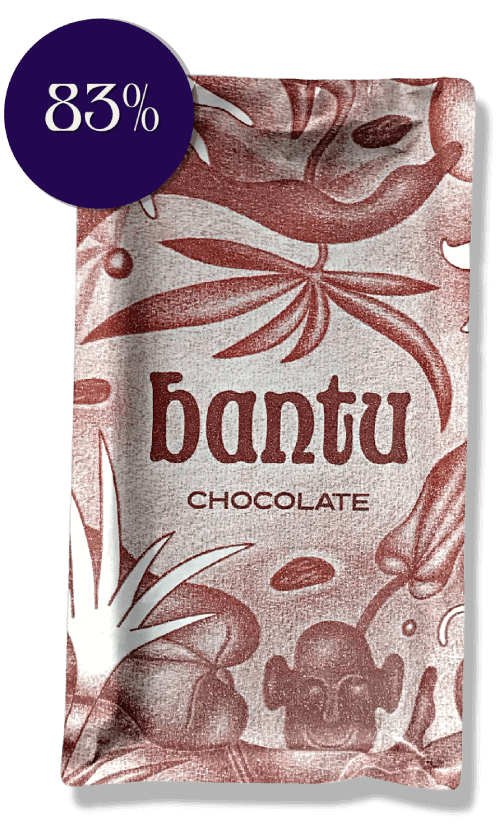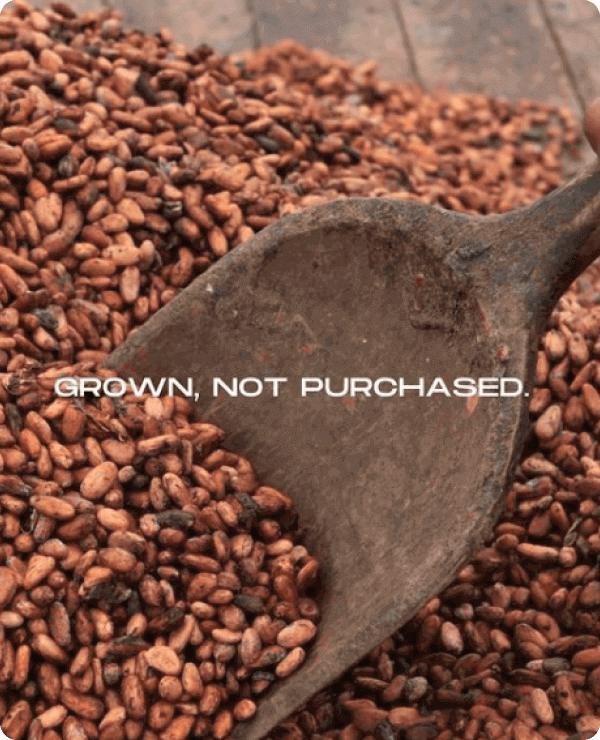
Chocolate for Christmas: Guide on Shopping, Gifting, and Packaging
October 5, 2024
Cacao Supper Club at Home: Guide to Tasting Chocolate, Cacao Tea, and Pulp Juice
November 5, 2024Why Some Love Dark Chocolate
And Some Don’t
The demand for dark chocolate continues to grow, due partly to the growing awareness of its health benefits. But while some consumers rave and swear by its rich, velvety goodness, others scrunch up their faces. “It’s too bitter,” they say. “How can anyone love this!?”
Now, here’s the truth you may never have heard: dark chocolate’s taste profile is varied and not always synonymous with bitterness. Among various dark chocolates, you’ll find notes of sweet, salty, and umami.
How, you ask?
Because a chocolate’s taste and flavour result from three things: amount of cacao, species of bean, and the chocolate maker’s magic touch.
Someone said if you hate dark chocolate, you haven’t really eaten high quality, fine flavour dark chocolate. Their opinion, right? Though everyone will never love dark chocolate no matter what, it is true that the quality of the dark chocolate you get very much influences how you experience its taste, mouthfeel, and flavour.
This article explores why dark chocolate tastes the way it does, why some people love it and others don’t, and how you can learn to appreciate its natural bitter edge.
But first things first, let’s define and differentiate some key terms we’ll be using.
Taste vs. Aroma vs. Flavour
Taste, aroma, and flavour are often used interchangeably, but they refer to distinct concepts.
Taste refers to the five basic sensations detected by the taste buds on our tongues and other areas in our mouths: sweet, sour, salt, bitter, and umami. Every food item exhibits one or more of these 5 basic tastes.
For example, 73% dark chocolate may have a bitter note from non-fat cocoa solids and sweet from added cane sugar. Additional ingredients like sea salt, lemon, caramel, etc., can give dark chocolate salty, sour, or umami tastes.
Aroma has to do with the smell of the food. While our taste buds or receptors can detect only 5 basic tastes, our sense of smell can detect thousands of individual aromas or odours. You may detect aroma through your nostrils even before you’ve tasted the food, or through the back of your throat while chewing or swallowing the food.
The cocoa bean has about 600 chemical compounds that contribute to the diversity of chocolate aroma and flavour. The most common groupings of chocolate aromas are usually described as fruity, earthy, and floral.
Flavour on the other hand refers to a broader sensory experience. It includes taste, aroma, mouthfeel (texture), chemical sensations, and emotional associations. For example, some people have described a chocolate’s flavour as ‘home’. This is because that flavour evokes feelings and memories of their childhood or some cherished event.
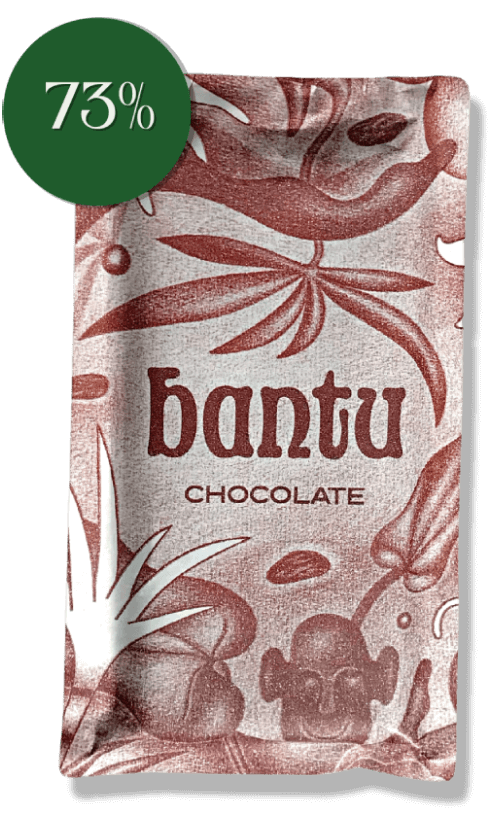
Noire 73% is one of 3 dark chocolate bars we craft in London with cacao beans from our farm in Cameroon
Why Do Some People Hate Dark Chocolate Taste?
We’re talking specifically of people who hate dark chocolate, not people who hate chocolate in all its forms and types. Yes, as surprising as it sounds, there are people who can’t stand the world’s most beloved treat. The reasons for the general dislike of chocolate are beyond the scope of this article. Let’s focus on why people who love milk chocolate or white chocolates say they find dark chocolate gross.
Briefly, some people hate dark chocolate for the following reasons:
1. Inborn preference for sweet taste
2. Familiarity with sweeter chocolate
3. Chocolate as a comfort food
4. Cultural influences
5. Demographic factors such as age and gender
6. Other factors like bad quality dark chocolate, etc.
Let’s now look at these dark chocolate-hating reasons in detail.
1. Inborn preference for sweet taste
We all begin here as infants, naturally drawn to sweet, salty, and savoury tastes and recoiling at sour and bitter ones. As we age, and our food preferences are no longer dictated by taste and flavour only, we learn to appreciate other tastes.
This appreciation for the complexity of taste varies from person to person and depends on early exposure to diverse flavours, parental choices, and cultural influences (see point 4). Some people go ahead to even prefer the bitter taste, enjoying it in coffee, beer, and dark chocolate. Others stick to their sweet roots, which can then be reinforced by socio-cultural and personal factors.
2. Familiarity with sweet chocolate
In 1875, Swiss chocolatier Daniel Peter crafted milk chocolate, a sweet creamy invention that has grown to become the world’s most popular type of chocolate.
For many people, milk chocolate is regular chocolate from childhood. As such, when they encounter dark chocolate’s bold, bitter taste, it can be jarring. Some persevere and discover a newfound love in dark chocolate while others remain loyal to milk chocolate’s sweetness.
3. Chocolate is primarily eaten for pleasure, many times to relieve bad emotions
We associate comfort food with sweet and savoury, not bitter taste. Couple this with the emotional marketing communication common in chocolate confectionary and it is understandable why dark chocolate is underrated. It’s only when someone learns to appreciate dark chocolate that they can associate eating it with pleasurable feelings.
4. Cultural and environmental influences
Where you grew up and where you now live influence your food preferences. Children raised in more natural, rural settings often have more exposure to whole foods which can lead them to appreciate intense flavours like in dark chocolate.
On the other hand, children in urban areas are often more exposed to heavily marketed processed sweeter snacks and may find dark chocolate unpleasant even though it’s healthier.
If your inner circle prefers milk chocolate, you’ll likely go along with them. Other factors like regional preferences and the extent of marketing and advertising also influence your choice of chocolate type.
There’s more marketing and advertising spend promoting milk chocolate than dark chocolate. The recent growth in dark chocolate is thanks to craft chocolate makers and changing consumer behaviours towards more healthy food choices.
5. Demographic factors such as age
Like what we said about the innate preference for sweet, younger consumers tend to like sweet chocolate more. Preference for dark chocolate increases with age.
6. Other factors such as bad quality dark chocolate
A chocolate consumer may not even know that what they found as gross in dark chocolate might have been due to bad quality cocoa beans and production techniques. You need to test different brands to appreciate the variety of flavours and quality across dark chocolate products. You may even get a 70% dark bar that is not as bitter as a 65% bar.
The final flavour of dark chocolate depends on the specie of cocoa beans, how the beans were grown, fermented, and dried by farmers, and even more importantly, how the chocolate maker processed the dried beans during roasting and mixing.
READ: Chocolate-Making from Tree to Bar – Our Ethical Model
Why Some People Love Dark Chocolate
Milk chocolate may be the most popular in terms of global sales volumes, but there are consumers who will not shake off their conviction that dark chocolate is the real deal.
Briefly, people love dark chocolate for the following reasons:
1. Acquired taste and appreciation for complexity
2. Cultural and environmental factors
3. Health benefits
Let’s expand them.
1. Socio-cultural factors
Just like we mentioned in reasons why people hate dark chocolate, environmental influence is also a reason why some people love dark chocolate. In Italy, for example, consumers tend to prefer dark and extra-dark chocolate over milk chocolate.
Chocolate as most of us know it is a European invention.
2. Acquired taste and appreciation for complexity
Some dark chocolate lovers started out not liking it, but as they kept eating it, overtime their taste buds adjusted, and they even began to crave the intense cocoa flavour. Some even reached a point where they began to find milk chocolate too awfully sweet and white chocolate totally uneatable.
3. Health benefits
It’s true that majority of people eat chocolate for pleasure, but others combine comfort eating with health benefits.
Dark chocolate contains more cocoa than milk chocolate or white chocolate, though that’s not always true because the percentage of cocoa in the chocolate matters. For example, 55% milk chocolate has more cocoa than say 40% dark chocolate. The higher the percentage, the more the flavanols responsible for chocolate’s health benefits.
High-cocoa dark chocolate from 70% and above offers several potential health benefits, which are the reason some people love dark chocolate.
– Improvement in mood and brain function
– Lower risk of cardiovascular disease
– Protection against the harmful effects of UV radiation
– Improvement in metabolic syndrome and potential help in weight management
The Science Behind Dark Chocolate’s Taste
Much of dark chocolate made with commercial, bulk cocoa has a distinct bitter edge, which sets it apart from milk chocolate and white chocolate. But why is dark chocolate often bitter?
The straightforward answer is that dark chocolate contains more cocoa solids and less added sugar than milk chocolate and white chocolate. But the bigger answer is a chemical one.
Let’s break it down.
The cocoa bean is home to numerous chemical compounds that give chocolate its taste and diverse flavours. Some species of cocoa beans have high levels of these compounds, others have low amounts, and still others have zero bitterness after roasting (roasting breaks down alkaloids in cocoa). Some rare beans have zero bitterness while unroasted. But most of mass market chocolate is made with cocoa beans containing high amounts of bitter compounds.
Research has identified that:
– Bitterness in cocoa is primarily driven by 2,5-diketopiperazines and the alkaloids theobromine and caffeine, also found in tea and coffee.
– Astringency (a drying, puckering sensation) is caused by acid amides and polyphenol glycosides.
– Flavanols, specifically flavan-3-ols, contribute to both bitter and astringent flavours in cocoa.
These compounds, especially flavanols, are also responsible for most of dark chocolate’s health benefits. Flavanols are powerful antioxidants that fight free radicals and lower your risk of developing chronic conditions. They also protect your skin from the damage of UV rays.
Generally, the higher the cocoa content, the more bitter the dark chocolate (because of less added sugar) and the more the antioxidants it contains.
Makossa 66%, our lowest cocoa content dark chocolate has a less bitter edge than Voodoo 83%, our dark chocolate with the highest amount of cocoa. But in terms of antioxidants, Voodoo 85% is richer.
READ ALSO: Flavonoid-Rich Foods and their Health Benefits – From Cacao to Your Taste Buds
There are several ways chocolate makers can make their dark chocolates less bitter.
1. Reduce the cocoa content
In the US, the European Union and the UK, dark chocolate can be as low as 35% cocoa. But that means it will have a lot of added sugar and other ingredients. One reason some people love dark chocolate is because it has less added sugar, so they prefer at least 60 to 70%.
2. Add other ingredients to enrich taste
Chocolate makers may add nuts, raisins, dates and various ingredients to dark chocolates that help take the edge off the bitterness.
3. Reduce the levels of the bitter compounds in the cocoa
Chocolate makers can reduce the levels of these compounds to make their dark chocolates less bitter, at the bitter cost (pun intended) of swapping health benefits for a more acceptable taste. For example, roasting cocoa beans at extreme high temperatures reduces bitterness but slashes out methylxanthines while treating cocoa solids with alkali, in a process known as Dutching, washes out flavanols to improve taste.
Dark chocolate made with Dutch cocoa is less bitter but also offers less health benefits.
When chocolate is made with alkalized cocoa powder, most of the health benefits are lost, even if the chocolate has high cocoa content.
It’s true we eat chocolate for pleasure and comfort, but shouldn’t we also eat it for the health benefits? Who really wants empty sugar when you can indulge in a rich, healthier treat?
How can you tell you’re getting chocolate made with alkali-treated cocoa?
Check ingredients on the label. You’ll find ‘alkali-treated’ or ‘processed with alkali’ to describe the cocoa used in the chocolate. But you may not be able to tell if the manufacturer is not transparent about their cocoa processing.
Bantu Chocolates do not contain Dutch cocoa. We make our chocolates from bean to bar without treating our cocoa nibs or cocoa liquor with alkali.
Dark Chocolate Aroma/Flavour Profiles
Dark chocolate has a complex aroma and flavour profile thanks to hundreds of chemical compounds found in the 3 widely known cocoa species and their multiple hybrids. Criollo and Trinitario species make fine chocolate with interesting, complex flavours. Forastero tends to give an acidic flavour and is the most common cocoa.
The hundreds of flavour notes in chocolate are usually described under 3 or 4 main notes.
Fruity notes from alcohols, aldehydes, and ketones.
Earthy and nutty notes from pyrazines.
Floral notes from esters.
Chocolate connoisseurs may describe the flavours as rich, bold, or complex. What’s important to know is that from the farm to your taste buds, the cocoa bean passes through many steps, undergoing chemical and physical changes that can either improve or mar the final aroma and flavour. In addition to processing, chocolate producers often add other ingredients like nuts, spices, and syrups that also enrich the aroma and flavour.
That is why it’s important to eat chocolate from different brands to better appreciate the rich diversity and possibilities of aromas packed inside the cocoa bean.
Impact of Bean Quality, Craftsmanship, and Processing on Dark Chocolate Flavour
Cocoa bean quality, chocolate maker’s craftmanship, and processing secrets are key to determining chocolate flavour.
What are quality cocoa beans?
Quality cocoa beans are those that have been farmed under the right conditions, then harvested, fermented, and dried in ways that develop chocolate flavour while preserving nutrients and health benefits. Criollo and Trinitario species produce fine quality beans but the trees are not as resistant to disease as Forastero the specie that produces over 80% of global cocoa beans.
Cocoa is mostly farmed in Africa and South America, and then exported to the US and Europe where the largest global chocolate companies are located. This big gap between cocoa producers and chocolate makers can create breaks in preserving cocoa bean quality.
Luckily, there exist chocolate-making models that seek to mend issues in the supply chain.
Bean-to-bar craft chocolate makers source their cocoa beans directly from Fairtrade-certified sources to make quality ethical chocolates in small batches. This gives them the advantage of controlling the processing of the dried beans instead of using premade raw chocolate or reconstituting chocolate from cocoa powder and cocoa butter.
On the other hand, tree-to-bar brands own farms in cocoa growing regions. This has the advantage of guaranteeing quality all the way from farming cocoa to moulding chocolate.
READ ALSO: Cocoa Bean Journey from Our Farm to Your Taste Buds
However, whether a chocolate maker is using mass-market cocoa, Fairtrade-certified cocoa, or cocoa from their own farm, processing techniques play a major role in the chocolate flavour. Roasting, grinding, and mixing techniques all work together in shaping the flavour of the chocolate product.
Some producers may treat their cocoa nibs or chocolate mass with alkali to reduce bitterness. This also reduces the antioxidant health benefits.
To get the best out of dark chocolate, make sure the producer sources their beans ethically and do not use alkali to reduce bitterness.
How to Start Liking Dark Chocolate
It is possible to go from ‘Ugh, dark chocolate is disgusting’ to ‘Aha, this is amazing!’ If others have done it, you can possibly do it too.
Some dark chocolate converts make such dramatic shifts that dark chocolate becomes the only type of chocolate they eat. Still, with such dramatic shifts, the change is not always instant. You will likely need repeated exposure to dark chocolate for a few weeks before you can embrace its taste.
Here are some practical tips to start liking dark chocolate:
1. Pair dark chocolate with sweet, tart, spicy flavours
Just as some consumers combine white chocolate with matcha to dull the too-sweetness of white chocolate, you can as well take the edge off dark chocolate’s bitter taste by pairing it with sweet, tart, or savoury foods. You can use the combos in various ways: in cooking, baking, dipping, or in plain eating chocolate.
Some chocolate lovers swear by dark chocolate and sea salt. Other great pairings consumers have found heavenly include:
Nut/nut butters: hazelnut, peanut, almonds, coconut flakes, pistachios, walnuts, pretty much any nut.
Spices: cayenne pepper, chilli, ginger, cinnamon, nutmeg, sesame.
Fruits: raspberry, strawberry, cherry, banana, apple, pineapple, dates, lemon, orange, mango, raisins, figs etc.
Syrups: caramel, hazelnut.
Beverages: wines, rum.
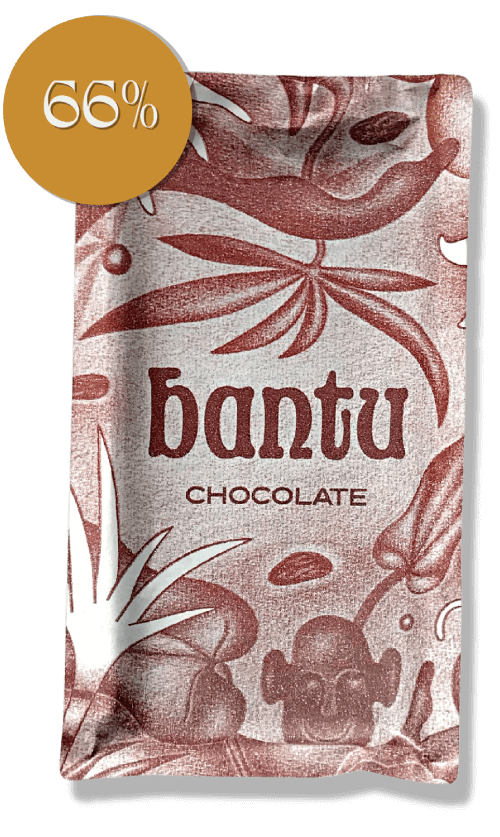
66% dark chocolate bar. Quality natural cocoa, sea salt, spices, and peanuts in one yummy bite. Suitable for newbies to the dark chocolate revolution.
2. Start with smaller serving sizes
An unfamiliar taste can be overwhelming when you try too much at once. Give your taste buds time to get used to the new taste. Why not start only with two squares of whatever percentage of dark chocolate you’re trying out? When you begin to crave it, you can then increase your serving size.
3. Let the chocolate slowly melt on your tongue
Cocoa butter makes real chocolate to melt in the mouth. But some consumers still chew chocolate instead of just enjoying the slow release of taste and flavour on their tongue. Give your taste buds time to dwell on and to evaluate the taste and aroma of dark chocolate in order to form a better judgment about its flavour.
4. Gradually increase cocoa percentage
How low in cocoa should your dark chocolate be?
It’s hard to state a specific percentage since the percentage on a label only indicates total cocoa and not how much of non-fat cocoa solids which are responsible for cocoa’s bitter taste. However, your dark chocolate shouldn’t be more ‘sugar and other ingredients’ than it is cocoa. Anything below 50%, even if labelled dark chocolate will likely be too sweet for you to appreciate as dark chocolate.
If you really want to do something, just go ahead and do it. Start with our 66% dark chocolate bar.
When you stop scrunching up your face every time, you can then move up to our 73% dark chocolate bar and why not 83% extra-dark bar?
Some chocolate lovers still find 90% and above great on their palate. But be sure the chocolate is not made with Dutch processed cocoa. Dutching is a method of reducing bitterness in cocoa by treating cocoa nibs or cocoa mass with alkali. While such chocolate may be less bitter and even high in cocoa, it has less cocoa flavanols.
READ ALSO: Top Flavonoid-Rich Foods and Their Health Benefits
4. Try Different brands and different cocoa percentages
Each brand has its own products and their different flavours. As such, concluding about dark chocolate’s taste and flavour from a single chocolate product can be erroneous. Because your first encounter with dark chocolate might have been with poor quality chocolate.
Cocoa variety used, post-harvest treatment, and chocolate makers processing techniques all contribute their quota to the final product flavour.
Try One of Our Dark Bars Today – Starting from 66% total cocoa
Answers to Common Questions
Is dark chocolate an acquired taste?
Liking dark chocolate may be an acquired taste for some consumers but not all. Some people grow up in regions where dark chocolate is preferred over sweet chocolate. But for those who have known milk chocolate as regular chocolate, it may take a while to acquire a liking for dark chocolate’s intense flavour.
Is dark chocolate bitter or sour?
Plain dark chocolate often has bitter notes. When it has other ingredients with tart flavours, you may get distinct sour tastes from these ingredients in addition to the bitterness from natural cocoa.
Is 70% dark chocolate too bitter?
No, 70% dark chocolate is not too bitter because it does have some added sugar in the remaining 30%. The level of bitterness also depends on the specie of the cocoa bean used and how the producer made the chocolate. This means you can find a 65% dark bar that’s even more bitter than a 70% bar.
Are all dark chocolates bitter?
No. The level of bitterness in dark chocolate depends on cocoa bean species, the amount of cocoa, and whether the cocoa is natural or alkalized. Low-cocoa dark chocolate tends to have more added sugar, and therefore is sweet. Many people prefer dark chocolate from around 60-85% cocoa. These are usually bittersweet, depending on the amount of sugar added. Few people enjoy dark chocolate beyond 90%.
Can you learn to love the bitter taste of dark chocolate?
Yes. Many consumers say it takes them a few weeks of repeatedly eating dark chocolate to begin craving and liking its bitter taste. You can begin with smaller serving sizes and low-cocoa dark chocolate like 66% dark chocolate, then work your way up to even above 85%.
Also leave the chocolate to slowly melt on your tongue to give your taste receptors room to adjust to the new chocolate taste.
What is the healthiest type of dark chocolate?
100% dark chocolate, but it’s too bitter and unpleasant unless you can find one made with rare aromatic fine flavour cacao beans. Most research investigating dark chocolate health benefits use 65-75%, so you may not need to eat intolerable high cocoa intensity chocolate just for health benefits when something lower can still provide the same. Instead look for dark chocolate high in non-alkalized cocoa, minimally processed, and has fewer added ingredients.
What is alkali in dark chocolate?
Alkali in dark chocolate indicates that the cocoa solids were treated with alkali to reduce bitterness in a process called Dutching. Alkalizing also give a darker colour to the cocoa solids. Common alkalis used in Dutch processed cocoa include potassium carbonate, sodium carbonate, and sodium hydroxide. Dark chocolate made with alkali-treated cocoa solids is less bitter, but also has fewer cocoa flavonols, the powerful antioxidants responsible for most of dark chocolate’s health benefits.
Shop Our Vegan Dark Bars Made with Non-Alkalized Cocoa
Key Takeaways
Dark chocolate is not always synonymous with bitterness as several factors contribute to a chocolate’s taste. These include cocoa bean type, processing, and chocolate recipe.
Many chocolate consumers find dark chocolate unpleasant mostly because they’ve known milk chocolate all their lives. However, it is possible to train your palate to also appreciate dark chocolate.
Some ways you can learn to like dark chocolate include:
– Pairing dark chocolate with sweet, tart, and spicy foods
– Starting dark chocolate in smaller serving sizes
– Gradually increasing cocoa content
– Trying different brands and percentages of dark chocolate
Try One Of Our Dark Bars Today – Starting From 66% Total Cocoa
References
https://www.healthyfood.com/advice/taste-smell-and-flavour-how-it-all-works/
https://www.factmr.com/report/dark-chocolate-market
https://today.yougov.com/consumer/articles/34090-americas-favorite-chocolate-milk-chocolate
https://beantobarworld.com/bean-to-bar-blog/why-does-dark-chocolate-taste-so-bitter
https://www.cell.com/current-biology/fulltext/S0960-9822(13)00208-X
Chocolate Extinction: Fact vs. Fiction + What Chocolate Lovers Can Do
Chocolate ExtinctionFact vs. Fiction, What Consumers Can Do Share On Facebook Twitter Email Is the world really running out of chocolate? Not really. Currently the global […]
Corporate Chocolate Gifting Ideas to Appreciate Employees and Delight Clients
Corporate Chocolate GiftingHow to Appreciate Employees & Delight Clients Share On Facebook Twitter Email When it comes to corporate gifting, a one-gift-fits-all approach just doesn't cut […]
Cacao Supper Club at Home: Guide to Tasting Chocolate, Cacao Tea, and Pulp Juice
Cacao Supper Club at HomeGuide to Tasting Chocolate, Cacao Tea, and Pulp Juice Share On Facebook Twitter Email Imagine gathering around the table with a few […]
